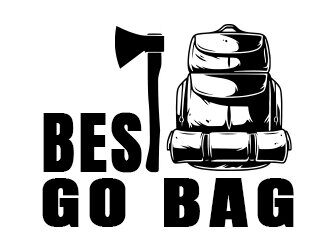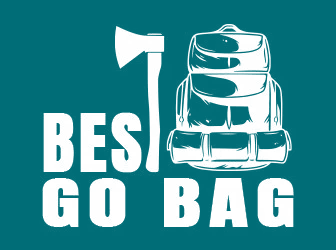Grocery store owners learned something when the pandemic hit America early last year. They discovered limiting shoppers to one each of certain items meant fewer angry customers.
Those store owners would rather listen to a few people griping about limits than hundreds complaining about bare shelves.
I think we’re going to see more of this in connection with other emergencies. Including extreme weather events.
Such as in the days leading up to a hurricane or the approach of a wildfire. Or in the aftermath of tornadoes and flooding.
Extreme weather empties shelves
Spring is now in full swing. And we’ve already seen more than our share of violent weather. Just ask the folks in Alabama and Mississippi. That’s where recent tornadoes have caused much destruction.
The La Niña weather pattern is expected to produce more tornadoes than usual this spring. As well as more hurricanes than normal. And more major hurricanes, meaning Category 3 or higher.
I don’t know anyone who expects this year’s wildfire season to be much better than it’s been in recent years.
All this means we can expect to see rationing signs in our grocery stores. The alternative – shelves stripped bare – would be even worse.
Evolution of food rationing
Rationing is not new in America. It occurred during World Wars I and II. But it is new to most Americans these days.
I’d like to take a look today at the evolution of food rationing through the decades. Some of you are probably familiar with some or most of this. In fact, you might have lived through it.
But for others it could be an eye-opening experience. Either way, it’s a fascinating history with possible implications for the future.
The first major example of food rationing in the U.S. began in 1917. That was after World War I began. President Woodrow Wilson established the U.S. Food Administration. In order to provide U.S. troops with the sustenance they needed to fight overseas.
Could meatless Tuesdays return?
Future President Herbert Hoover was tasked with overseeing this voluntary program. Americans’ compassion and patriotism would determine the initiative’s success.
The goal of this new administration was to manage the wartime supply. As well as the conservation, distribution and transportation of food.
American citizens were asked to reduce consumption of meat. Plus wheat, fats and sugar. They were encouraged to eat more fruits and vegetables. Because they were difficult to keep fresh when transported overseas.
Among the slogans people saw on billboards and heard on radios were, “Food will win the war.” Promotions included “Meatless Tuesdays” and “Wheatless Wednesdays.”
World War I troops got food
Local food boards were established. In order to help American families prepare meals without meat and wheat.
These boards offered guidance, recipes with suitable replacements and canning demonstrations.
So, did the plan work? Yes. Within a year, food shipments to our troops in Europe doubled.
Between 1918 and 1919, food consumption in America was reduced by 15 percent. Following the war, Hoover organized shipments of food to millions in Europe. They were starving due to the effects of the war.
Restrictions became mandatory
Fast forward to World War II. It was obvious U.S. involvement in this global conflict would last longer than in World War I.
Voluntary conservation wasn’t going to be enough. So, the U.S. government put restrictions on imported foods. And placed limitations on the transportation of goods, due to a shortage of rubber tires.
In early 1942, the Emergency Price Control Act was established. Price limits were set and food rationing began.
Soon Americans couldn’t purchase sugar without government-issued food coupons. Additional rationed foods included meat and cheese. Plus canned fish, canned milk and other processed foods.
War ration stamps used widely
Citizens who wished to obtain rationed foods registered to receive war ration books. They contained stamps that could be used to purchase restricted items.
These stamps were very popular. In fact, 91 percent of Americans registered for the stamps, which were issued on a point system.
For example, people were allowed to use 48 “blue points” each month to buy canned, bottled or dried foods. And 64 “red points” to purchase meat, fish and dairy products.
Many people ended up trading one type of stamp for another. Forged and stolen stamps were also sold on the black market.
Americans plant victory gardens
During World War II, the slogan changed from “Food will win the war” to “Do with less so they’ll have enough.”
Many people planted “victory gardens” to supplement supplies they bought at stores.
Sugar was in short supply because much of it had come from Hawaii and the Philippines. Those imports were cut off in 1942.
Some people saved some of their stamps for special occasions, such as holidays. But that often backfired when stores did not receive shipments in time.
Where the rubber meets the road
We can all figure out why food rationing was needed during World War II. But why were rubber products so sparse?
Because the world’s primary supplier of natural rubber products was Southeast Asia. Japan occupied rubber tree plantations after the U.S. entered the war.
American factories got busy trying to produce products needed for the war effort. So, citizens were asked to turn in their garden hoses for recycling. As well as raincoats, old tires, gloves and rubber shoes.
Very few new tires were seen on cars during the war. Some people even lined the insides of their tires with newspapers to try to make them last longer.
Be prepared for shortages and rationing
It’s been a long time since food and other items were legally rationed in America. But that doesn’t mean it will never happen again. Regardless, stores could limit purchases of some products due to extreme weather.
Let’s face it. There are many other threats in our world today as well. Including hostile governments and terrorists. They’d love to see Americans scrambling for their next meal.
The best way to prepare for a food shortage is to stock up on food with a long shelf life.
And with Emergency Food Bars from 4Patriots, that problem is solved – 100%.
This food can literally go anywhere with you – your car, boat, RV or vacation home. You can stash some wherever you need a little extra “food security” that’s not only delicious, but mega-nutritious too.
Just hear it from veterans like Patricia A.: “These Emergency Food Bars are truly delicious. Bought them to try out and was impressed. Like many other former-military, I have eaten C-rations, K-rations, MRE’s. These by far taste the best. Now putting them in my car for emergencies (and when I feel puckish!)”
Plus, it stands up to extreme temps. So keeping it in your car like Patricia – or almost anywhere – means you’ll always have a hidden stash of emergency food, no matter the weather.


